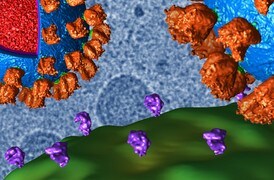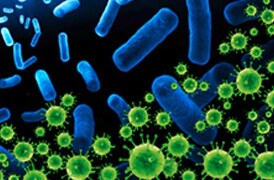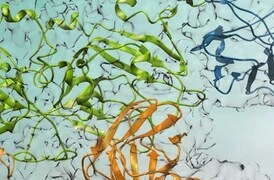Structural Biology Research
Cryo-electron microscopy enables the structural analysis of challenging biological targets such as large complexes, flexible species and membrane protein.
Proteins serve as the primary molecular machinery of life, maintaining the functional order of our cells. As their structure informs their function, accurate determination of structural information is the basis of biological insights for any number of physiological, pharmaceutical, and biomaterial advances.
Cryo-electron microscopy (cryo-EM) is an established method for the determination of 3D structural information for a wide range of biomolecules, including proteins and protein complexes.
Until recently, proteins had to be crystallized to reconstruct and visualize them with X-ray crystallography. This information came with several stipulations; crystallization is time consuming and can typically only work on single purified protein (monomers or dimers); additionally, some proteins do not crystallize. Finally, the structure has to be determined outside of the cellular environment, removing vital contextual information.
Cryo-EM, which is comprised of several applications like single particle analysis (SPA), cryo-electron tomography (cryoET), and micro electron diffraction (MicroED), has revolutionized the study of proteins, their complexes, and their dynamics.
Cryo-electron microscopy enables the structural analysis of challenging biological targets such as large complexes, flexible species and membrane protein.
Cryo-EM techniques enable multiscale observations of 3D biological structures in their near-native states, informing faster, more efficient development of therapeutics.
Learn how to take advantage of rational drug design for many major drug target classes, leading to best-in-class drugs.

Single Particle Analysis
Single particle analysis (SPA) is a cryo-electron microscopy technique that enables structural characterization at near-atomic resolutions, unraveling dynamic biological processes and the structure of biomolecular complexes/assemblies.

Cryo-Tomography
Cryo-electron tomography (cryo-ET) delivers both structural information about individual proteins as well as their spatial arrangements within the cell. This makes it a truly unique technique and also explains why the method has such an enormous potential for cell biology. Cryo-ET can bridge the gap between light microscopy and near-atomic-resolution techniques like single-particle analysis.

MicroED
MicroED is an exciting new technique with applications in the structural determination of small molecules and protein. With this method, atomic details can be extracted from individual nanocrystals (<200 nm in size), even in a heterogeneous mixture.

Single Particle Analysis
Single particle analysis (SPA) is a cryo-electron microscopy technique that enables structural characterization at near-atomic resolutions, unraveling dynamic biological processes and the structure of biomolecular complexes/assemblies.

Cryo-Tomography
Cryo-electron tomography (cryo-ET) delivers both structural information about individual proteins as well as their spatial arrangements within the cell. This makes it a truly unique technique and also explains why the method has such an enormous potential for cell biology. Cryo-ET can bridge the gap between light microscopy and near-atomic-resolution techniques like single-particle analysis.

MicroED
MicroED is an exciting new technique with applications in the structural determination of small molecules and protein. With this method, atomic details can be extracted from individual nanocrystals (<200 nm in size), even in a heterogeneous mixture.
To ensure optimal system performance, we provide you access to a world-class network of field service experts, technical support, and certified spare parts.




